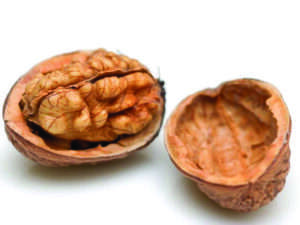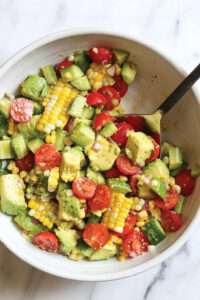By Carol Fisher-Linn
Some say ‘toh mah toe’ and some say ‘toh may toe’
Either way you say it – it’s a favorite veggie, right?
Tomato may be a favorite, but it is not necessarily a vegetable. Botanically, tomato is a fruit because tomatoes grow from a flower and contain seeds – according to healthline.com and many other sites online. So, does that mean that an avocado is actually a one-seeded berry? Let’s find out.
Some people truly do consider tomato a vegetable while others consider it fruit. But here’s the rub – tomato can sometimes be categorized as a fruit, and sometimes as a vegetable. Why? Perspective! You see, “the exact definitions will depend on whether you’re a gardener or a chef, as explained by the European Food Information Council (EUFIC). Moreover, your language and country of origin may also affect how you perceive this issue.” (nybg.org)

Frankly, without even hearing the arguments, I am set to pondering if a taste for fruits can’t only get one into all sorts of misery. Consider this if you will … Poor Eve got tempted to eat a single fruit by the serpent, and her single bite created misery for all of us. Then there was a mythological bad guy, Hades, who tricked Persephone with juicy pomegranate seeds. She ate them and got whisked away to the Underworld. Ever hear of the Trojan War? It was allegedly started over a golden apple tossed into a feast of the gods at a wedding. This insertion of a single apple into a festivity cascaded into all kinds of mayhem – and then led to war. Now, you tell me, has kale or arugula ever caused such havoc?
Ahh, you say, all that is just myth, right? True, but digest this little bit of American history that I found on National Geographic: “No less than the United States Supreme Court weighed in on this familiar debate in Nix v. Hedden, which established that the tomato should be classified as a vegetable rather than a fruit under U.S. Customs regulations. The Court’s 1893 decision was not meant to reflect the technical botanical meaning of “fruit,” but rather to correspond with commonly used distinctions between fruits and vegetables for the purposes of a tariff on imported produce.”
It does get complicated, doesn’t it? Let me confuse you more: per nutrition organization, EUFC.org, “Other botanical fruit that are culinarily considered vegetables are: avocados, olives, pumpkins, tomatos, sweet corn, courgette, cucumbers, green peas, chili, aubergine.” PS: courgette is zucchini; aubergine is eggplant.
The New York Botanical Garden is a lovely place to visit but when you begin posing complicated questions, you become enveloped in a swirling mist of information forcing you catch your breath to absorb it all. Here’s what they have to say about fruits: “A fruit is a mature, ripened ovary, along with the contents of the ovary. The ovary is the ovule-bearing reproductive structure in the plant flower. The ovary serves to enclose and protect the ovules, from the youngest stages of flower development until the ovules become fertilized and turn into seeds. Eventually, the fruit functions to spread the seeds or to attract dispersers. There are many different kinds of fruit–from dry to fleshy, from dehiscent (splitting open) to indehiscent and from single seed to many-seeded.”

So, to further confuse you: “Technically, fruits also include many things that we commonly call nuts (when enclosed by their shells—for example, walnut, sunflower seed, peanut, chestnut, acorn, and even coconut).” But be careful not to put all nuts into that category – for instance, the Brazil nut is not a fruit – it is a seed.
And then, “there are the spices (allspice, vanilla bean, chili pepper, fennel seeds, black pepper, coriander), melons and squash (including cucumber, pumpkin, watermelon), most berries (blueberry, cranberry, gooseberry), and grains (corn, wheat, rice), which mostly consist of seed, but are also made of ovary tissue and therefore fruits.”
Bottom line: if you look at the issue of veggie vs fruit from a culinary standpoint, fruits and vegetables are separated by their taste and aroma. So, fruits in the culinary sense are sweet or sour like apples and berries-including bananas which are really a berry – (see healthline.com), and often used for desserts, juices, or smoothies. Vegetables, on the other hand are considered those used for a hearty side dish, or even the main course (cauliflower, potatoes).
Good news for parents who can’t seem to always get their kiddoes to eat their veggies. When offering them guac (yes, avocado is a berry), cucumber or rice, just tell them they are eating fruit and who knows? They just might clean their plates.
